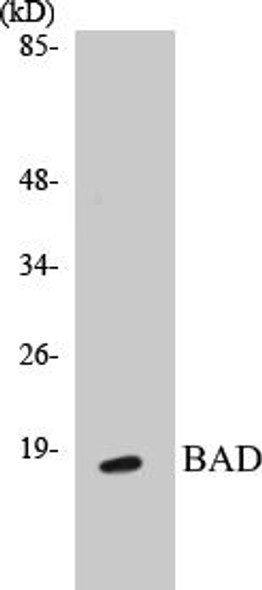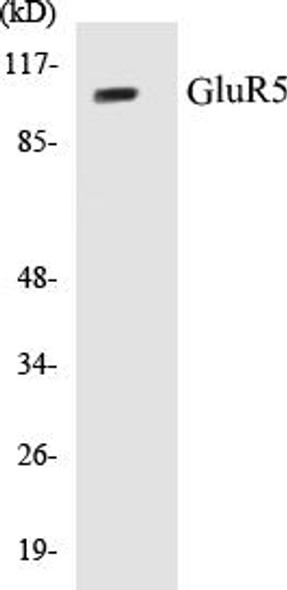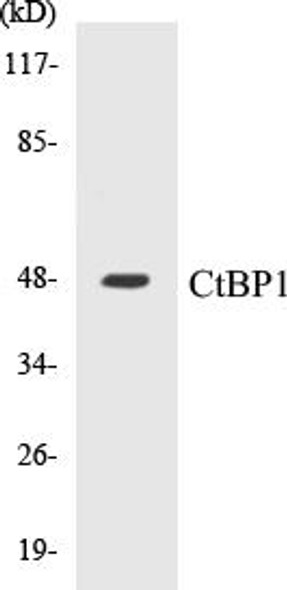Immunology
SKP2/p45 Colorimetric Cell-Based ELISA Kit
- SKU:
- CBCAB00857
- Product Type:
- ELISA Kit
- ELISA Type:
- Cell Based
- Research Area:
- Immunology
- Reactivity:
- Human
- Detection Method:
- Colorimetric
Description
| Product Name: | SKP2/p45 Colorimetric Cell-Based ELISA |
| Product Code: | CBCAB00857 |
| ELISA Type: | Cell-Based |
| Target: | SKP2/p45 |
| Reactivity: | Human |
| Dynamic Range: | > 5000 Cells |
| Detection Method: | Colorimetric 450 nmStorage/Stability:4°C/6 Months |
| Format: | 96-Well Microplate |
The SKP2/p45 Colorimetric Cell-Based ELISA Kit is a convenient, lysate-free, high throughput and sensitive assay kit that can detect SKP2/p45 protein expression profile in cells. The kit can be used for measuring the relative amounts of SKP2/p45 in cultured cells as well as screening for the effects that various treatments, inhibitors (ie siRNA or chemicals), or activators have on SKP2/p45.
Qualitative determination of SKP2/p45 concentration is achieved by an indirect ELISA format. In essence, SKP2/p45 is captured by SKP2/p45-specific primary antibodies while the HRP-conjugated secondary antibodies bind the Fc region of the primary antibody. Through this binding, the HRP enzyme conjugated to the secondary antibody can catalyze a colorimetric reaction upon substrate addition. Due to the qualitative nature of the Cell-Based ELISA, multiple normalization methods are needed:
| 1. | A monoclonal antibody specific for human GAPDH is included to serve as an internal positive control in normalizing the target absorbance values. |
| 2. | Following the colorimetric measurement of HRP activity via substrate addition, the Crystal Violet whole-cell staining method may be used to determine cell density. After staining, the results can be analysed by normalizing the absorbance values to cell amounts, by which the plating difference can be adjusted. |
| Database Information: | Gene ID: 6502, UniProt ID: Q13309, OMIM: 601436, Unigene: Hs.23348 |
| Gene Symbol: | SKP2 |
| Sub Type: | None |
| UniProt Protein Function: | SKP2: an F-box protein of the SCF (SKP1-CUL1-F- box protein) E3 ubiquitin ligase system. The F-box component of the SCF complex is responsible for recognizing different substrates for ubiquitination. The SCF E3 complex mediates the ubiquitination and subsequent proteasomal degradation of target proteins involved in cell cycle progression, signal transduction and transcription. Specifically recognizes phosphorylated CDKN1B/p27kip and is involved in regulation of G1/S transition. Degradation of CDKN1B/p27kip also requires CKS1. Three alternatively-spliced isoforms have been described. |
| UniProt Protein Details: | Protein type:Ubiquitin conjugating system; Cell cycle regulation Chromosomal Location of Human Ortholog: 5p13 Cellular Component: nucleoplasm; cytoplasm; nucleolus; SCF ubiquitin ligase complex; nucleus; cytosol Molecular Function:identical protein binding; protein binding; ubiquitin-protein ligase activity Biological Process: regulation of apoptosis; cell proliferation; protein polyubiquitination; regulation of cell cycle; anaphase-promoting complex-dependent proteasomal ubiquitin-dependent protein catabolic process; positive regulation of smooth muscle cell proliferation; positive regulation of estrogen receptor signaling pathway; mitotic cell cycle; G2/M transition of mitotic cell cycle; G1/S transition of mitotic cell cycle |
| NCBI Summary: | This gene encodes a member of the F-box protein family which is characterized by an approximately 40 amino acid motif, the F-box. The F-box proteins constitute one of the four subunits of ubiquitin protein ligase complex called SCFs (SKP1-cullin-F-box), which function in phosphorylation-dependent ubiquitination. The F-box proteins are divided into 3 classes: Fbws containing WD-40 domains, Fbls containing leucine-rich repeats, and Fbxs containing either different protein-protein interaction modules or no recognizable motifs. The protein encoded by this gene belongs to the Fbls class; in addition to an F-box, this protein contains 10 tandem leucine-rich repeats. This protein is an essential element of the cyclin A-CDK2 S-phase kinase. It specifically recognizes phosphorylated cyclin-dependent kinase inhibitor 1B (CDKN1B, also referred to as p27 or KIP1) predominantly in S phase and interacts with S-phase kinase-associated protein 1 (SKP1 or p19). In addition, this gene is established as a protooncogene causally involved in the pathogenesis of lymphomas. Alternative splicing of this gene generates three transcript variants encoding different isoforms. [provided by RefSeq, Jul 2011] |
| UniProt Code: | Q13309 |
| NCBI GenInfo Identifier: | 37537922 |
| NCBI Gene ID: | 6502 |
| NCBI Accession: | Q13309.2 |
| UniProt Secondary Accession: | Q13309,Q8TDZ0, Q8TDZ1, Q9BV69, A8K5E0, B4DJT4, |
| UniProt Related Accession: | Q13309 |
| Molecular Weight: | 23,763 Da |
| NCBI Full Name: | S-phase kinase-associated protein 2 |
| NCBI Synonym Full Names: | S-phase kinase-associated protein 2, E3 ubiquitin protein ligase |
| NCBI Official Symbol: | SKP2 |
| NCBI Official Synonym Symbols: | p45; FBL1; FLB1; FBXL1 |
| NCBI Protein Information: | S-phase kinase-associated protein 2; p45skp2; F-box/LRR-repeat protein 1; CDK2/cyclin A-associated protein p45; S-phase kinase-associated protein 2 (p45) |
| UniProt Protein Name: | S-phase kinase-associated protein 2 |
| UniProt Synonym Protein Names: | Cyclin-A/CDK2-associated protein p45; F-box protein Skp2; F-box/LRR-repeat protein 1; p45skp2 |
| Protein Family: | S-phase kinase-associated protein |
| UniProt Gene Name: | SKP2 |
| UniProt Entry Name: | SKP2_HUMAN |
| Component | Quantity |
| 96-Well Cell Culture Clear-Bottom Microplate | 2 plates |
| 10X TBS | 24 mL |
| Quenching Buffer | 24 mL |
| Blocking Buffer | 50 mL |
| 15X Wash Buffer | 50 mL |
| Primary Antibody Diluent | 12 mL |
| 100x Anti-Phospho Target Antibody | 60 µL |
| 100x Anti-Target Antibody | 60 µL |
| Anti-GAPDH Antibody | 60 µL |
| HRP-Conjugated Anti-Rabbit IgG Antibody | 12 mL |
| HRP-Conjugated Anti-Mouse IgG Antibody | 12 mL |
| SDS Solution | 12 mL |
| Stop Solution | 24 mL |
| Ready-to-Use Substrate | 12 mL |
| Crystal Violet Solution | 12 mL |
| Adhesive Plate Seals | 2 seals |
The following materials and/or equipment are NOT provided in this kit but are necessary to successfully conduct the experiment:
- Microplate reader able to measure absorbance at 450 nm and/or 595 nm for Crystal Violet Cell Staining (Optional)
- Micropipettes with capability of measuring volumes ranging from 1 µL to 1 ml
- 37% formaldehyde (Sigma Cat# F-8775) or formaldehyde from other sources
- Squirt bottle, manifold dispenser, multichannel pipette reservoir or automated microplate washer
- Graph paper or computer software capable of generating or displaying logarithmic functions
- Absorbent papers or vacuum aspirator
- Test tubes or microfuge tubes capable of storing ≥1 ml
- Poly-L-Lysine (Sigma Cat# P4832 for suspension cells)
- Orbital shaker (optional)
- Deionized or sterile water
*Note: Protocols are specific to each batch/lot. For the correct instructions please follow the protocol included in your kit.
| Step | Procedure |
| 1. | Seed 200 µL of 20,000 adherent cells in culture medium in each well of a 96-well plate. The plates included in the kit are sterile and treated for cell culture. For suspension cells and loosely attached cells, coat the plates with 100 µL of 10 µg/ml Poly-L-Lysine (not included) to each well of a 96-well plate for 30 minutes at 37°C prior to adding cells. |
| 2. | Incubate the cells for overnight at 37°C, 5% CO2. |
| 3. | Treat the cells as desired. |
| 4. | Remove the cell culture medium and rinse with 200 µL of 1x TBS, twice. |
| 5. | Fix the cells by incubating with 100 µL of Fixing Solution for 20 minutes at room temperature. The 4% formaldehyde is used for adherent cells and 8% formaldehyde is used for suspension cells and loosely attached cells. |
| 6. | Remove the Fixing Solution and wash the plate 3 times with 200 µL 1x Wash Buffer for five minutes each time with gentle shaking on the orbital shaker. The plate can be stored at 4°C for a week. |
| 7. | Add 100 µL of Quenching Buffer and incubate for 20 minutes at room temperature. |
| 8. | Wash the plate 3 times with 1x Wash Buffer for 5 minutes each time. |
| 9. | Add 200 µL of Blocking Buffer and incubate for 1 hour at room temperature. |
| 10. | Wash 3 times with 200 µL of 1x Wash Buffer for 5 minutes each time. |
| 11. | Add 50 µL of 1x primary antibodies (Anti-SKP2/p45 Antibody and/or Anti-GAPDH Antibody) to the corresponding wells, cover with Parafilm and incubate for 16 hours (overnight) at 4°C. If the target expression is known to be high, incubate for 2 hours at room temperature. |
| 12. | Wash 3 times with 200 µL of 1x Wash Buffer for 5 minutes each time. |
| 13. | Add 50 µL of 1x secondary antibodies (HRP-Conjugated AntiRabbit IgG Antibody or HRP-Conjugated Anti-Mouse IgG Antibody) to corresponding wells and incubate for 1.5 hours at room temperature. |
| 14. | Wash 3 times with 200 µL of 1x Wash Buffer for 5 minutes each time. |
| 15. | Add 50 µL of Ready-to-Use Substrate to each well and incubate for 30 minutes at room temperature in the dark. |
| 16. | Add 50 µL of Stop Solution to each well and read OD at 450 nm immediately using the microplate reader. |
(Additional Crystal Violet staining may be performed if desired – details of this may be found in the kit technical manual.)






